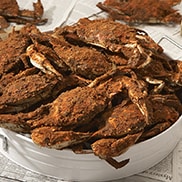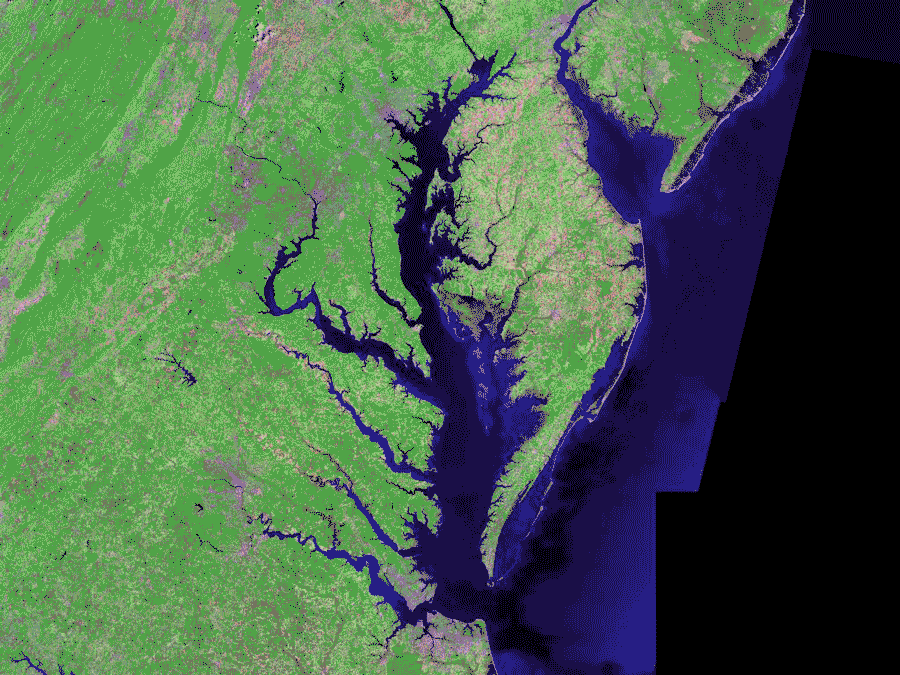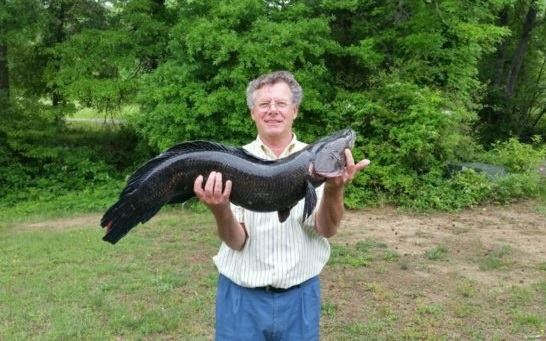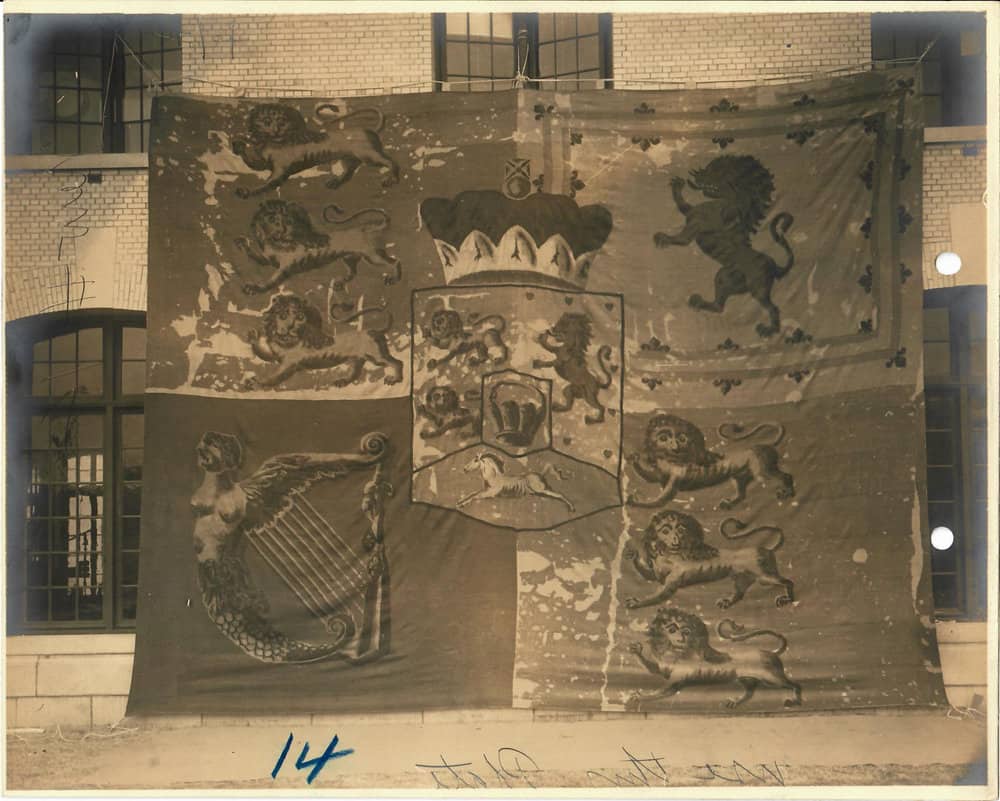By Rona Kobell, Bay Journal News Service
oldbay.comNothing says Maryland quite like a steamed crab smothered in Old Bay and slapped on a long picnic table.
But sometimes, unsuspecting diners paying close to a day’s pay for the privilege of eating local bounty may actually be enjoying crabs that were trucked up Interstate 95 in a hot bushel basket — fresh from the Carolina coast or Gulf of Mexico.
Lee Carrion is trying to change that. For more than a decade, she has owned Coveside Crabs with her husband, waterman Richard Young, and has railed against businesses that purport to sell local crabs but don’t. She says that the lack of clarity hurts local watermen like her husband, who can’t compete with the larger and less expensive Gulf imports.
Carrion points to a state law, rarely enforced, that requires those who claim to sell local products to disclose the state in which the products originated. She would like the law to go one step further and require all who sell crabs to disclose the crabs’ place of origin on a sign in their establishments.
“People buy crabs in Maryland, and they assume they were caught in Maryland. That is the Catch-22 here,” she said. “Whether you say it or not, there is an implied locality, and the customer is being defrauded.”
Gulf and Southern crabs can be cheaper than Maryland crabs, in part because with a longer season, the crabbers there are able to catch many more — and larger ones as well — than their Chesapeake Bay competitors.
While Gulf crabs are generally cheaper, seafood industry insiders say that unsuspecting customers often shell out two or three times that cost for what they believe are Maryland crabs, never knowing they were caught in Louisiana.
Some seafood businesses, though, say they rely on Gulf crabs, and as long as Maryland diners are enjoying them, they’ll keep providing them. Otherwise, owners say, they’d have to close for the winter.
“If I was a restaurant in Baltimore, you’re doggone right I want to have the Gulf,” said Johnny Graham, owner of Graham & Rollins, a 75-year-old crab processing business in Hampton, VA.
Virginia hasn’t experienced the same degree of pressure for branding local crabs, in part because the state doesn’t share a crab-house and crab-feast culture with its northern neighbor. Most of the crabs caught there, Graham said, end up at a processor.
But Graham said the push for a local product with picked crab meat has been important to his bottom line. A few years ago, he said, imports from Venezuela and Asia were undercutting his prices by close to 40 percent. The restaurants selling the products were claiming the meat was local or domestic when it was not.
Through an education campaign, Graham said, his companies and others in Virginia are now getting higher prices for their product.
A study the nonprofit Oceana conducted in 2015 found that close to half of the meat in crab cakes sold in Baltimore and Annapolis, labeled as local, came from foreign countries.
Twice, the Maryland legislature has tried to pass a “truth in labeling” law that would have required identifying the source of crab products by the state and county where they were harvested. Introduced by Del. Eric G. Luedtke, D-Montgomery County, in 2014 and again in 2015, the bill failed to pass in part because of pushback from restaurants and crab processors.
Maryland officials have long wanted to promote local seafood, but must grapple with the fact that the state’s waters don’t produce enough.
A few restaurateurs, like John Shields of Gertrude’s in Baltimore, are so committed to local, seasonal eating that they won’t put a crab cake on their menu unless they can use local meat. But most can’t afford to risk losing customers, said Steve Vilnit, former seafood marketing manager with the Maryland Department of Natural Resources. While with the DNR, he established the Maryland True Blue Program to help promote local products — both the ones residents already love, like crabs and rockfish, and the ones they mightknow little about, like yellow perch and spiny dogfish.
The program required 75 percent local product. With that allowance, Vilnit said, nearly 150 restaurants qualified to carry the True Blue logo. He randomly checked vending receipts to verify eligibility. While he never had to kick anyone out, he said, a few times restaurants took themselves out because they had to buy foreign crab meat to meet demand or cut costs.
Vilnit focused his efforts on picked crab meat because steamed crabs were a far smaller share of the market. Nevertheless, he said he investigated Carrion’s claims and could not confirm that any restaurants or crab houses claiming to have local product sold Gulf seafood instead. Just because people make assumptions, he said, doesn’t mean the business did something illegal.
But when the Maryland Department of Agriculture regained its oversight of seafood marketing, Carrion saw an opportunity to renew her push for the local labeling law in her role as one of 10 commissioners advising the state.
Carrion envisions a law in Maryland similar to the one governing Vidalia onions, which only allows onions grown in that Georgia town to carry the label. She also points out that farmed oysters are marketed by identifying the rivers in which they were caught, and that crabs also take on the tastes of the rivers where they were harvested.
Ron Buckhalt, who directs the MDA’s seafood marketing program, visited Carrion’s Dundalk operation on a recent morning to talk with her about how the department can address the issue. Buckhalt said in an interview before the visit that he’s listening to his vocal commissioner, but not sure what the department can do.
“How do you police it? That is the question. It rests on the honesty of the merchants,” he said. “If someone does advertise one thing and does another, we can basically say, ‘Don’t do that.’ But that’s about it. And it has to be a gentle reminder, so we don’t sound like the big bad regulators, and then they decide not to serve crabs anymore. We certainly don’t want that.”
Many Maryland crab establishments that supplement their local catch with Gulf-caught crustaceans are honest about it; some employ a don’t-ask-don’t-tell attitude; and some will claim the crabs are local when they are not.
“A lot of places lie about it, that’s for sure,” said John Ecker, manager of Conrad’s Crabs and Seafood Market in Baltimore. Ecker’s boss, Tony Conrad, is a waterman who catches his own crabs; he works with another Baltimore waterman and six or seven others on the Eastern Shore. Between 90 and 95 percent of their crabs in the spring, summer and fall are from Maryland, he said. They sell more Gulf product in the winter, when fresh Maryland crabs are not available, Ecker added. Conrad’s posts a sign — “we catch our own” — but doesn’t generally get more specific on a daily basis.
To meet the demand for Labor Day crab feasts, Ecker said he drove to the Eastern Shore four times over a weekend to purchase local crabs. Could he have supplemented with Gulf crabs from wholesalers? Possibly, he said, but the customers expect local product, and he tries to provide it.
Ecker shares Buckhalt’s view that it is hard to police local branding, and the best policy is to have a good product and be honest about where it comes from.
Joe Jackson of the Blue Point Crab House in Reisterstown agreed.
“A lot of people don’t ask, but most people know that if they buy from us, we also buy from Louisiana,” he said. Labeling where the crabs come from, he said, would be hard to do, because workers have to quickly sort the catch into sizes for sale.
Blue Point’s website says it serves “Maryland’s best crabs.” That may imply the crabs are local, but doesn’t say they all are all the time. It is, Buckhalt said, a gray area. The tagline “Maryland’s Best” is an MDA trademark, he said; an informal description as “Maryland’s best…” may not be.
Carrion, though, is not giving up the cause. “If the waterman is trying to make a living,” she said, “he would get more money if there was demand for true local crabs.”




